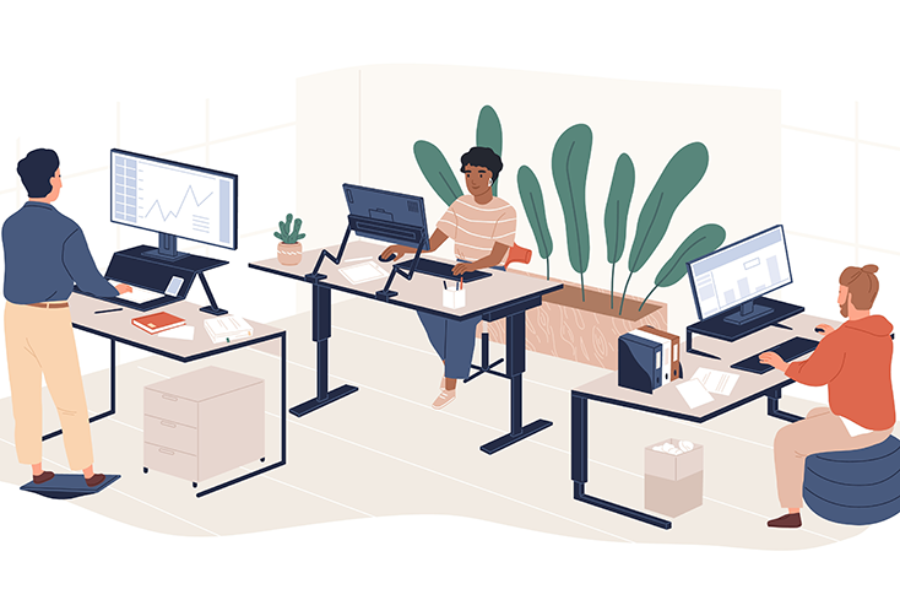By Wema Hoover
What does return to the workplace look like after two years of empty offices, makeshift home offices and employees struggling to balance work and life demands? How do organizations create a workplace that supports the mental health of their employees during another transition?
Much like assembling the pieces of a puzzle, organizations are piecing together a “new normal” — and the ones that do it well will bring a mental health perspective to the conversation. This will go a long way toward retaining employees while keeping productivity and innovation high.
So, what does “bringing a mental health perspective” look like?
Each company and employee are unique, as are their needs and demands. If we have learned anything the past year and a half, it has been the need for a flexible approach to work, heightened emotional intelligence and resilience. Companies that lead with this, while centering the mental health of their employees, will come out ahead.
The Current Landscape
Prior to the pandemic, many believed that productivity and performance were dependent on being in the office, with points given for partaking in activities that provided visibility and the opportunity to be seen Things like actual “face time,” networking and an emphasis on building strategic work relationships.
After transitioning to working from home, we learned that productivity and performance didn’t suffer — and in many cases, it flourished. That’s a benefit that companies can continue to make use of. However, one challenge remains; lines have become blurred as employees answer emails after hours, on weekends and even in the middle of the night. Boundaries have become unclear (and sometimes even disregarded) as the sense of “always being on the clock” has become the new norm.
Regardless of the stressors and even isolation that many reported due to working from home, employees enjoyed the increased flexibility and independence. Fast-forward to today, and many have finally found ways to make the unexpected change work, and are more than a little reluctant to let it go, which seems to be feeding the current exodus from the workforce.
All these factors impact the mental health of employees who don’t want flexibility just for flexibility’s sake. They want it to avoid the all-too-familiar stress, burnout and overwhelm of outdated productivity and performance metrics. Organizations that understand this landscape can create environments that empower their employees and teams by prioritizing mental health.
What The New Model Needs
Organizations should create an environment that incorporates employee needs and engages feedback. Companies that survey their employees are better positioned to create a workplace solution that fits their employees’ needs as well as their own. Command and control are a thing of the past; if companies want to retain employees and engage productivity and innovation while avoiding burnout, they will need to take an open and exploratory approach to reinventing the workplace.
Here are some ideas companies should keep in mind to create not just a new normal, but a better one.
Include Mental Health in Benefit Offerings
This is particularly important in terms of mental health care and should include Employee Assistance Programs. Often referred to as EAPs, these employee benefit programs assist employees with personal problems and/or work-related issues that may impact their job performance, health, mental or emotional well-being. Additionally, offerings should include parental assistance, such as emergency childcare or reimbursement offerings, and general wellness and fitness offerings that have shown to decrease stress and burnout.
Respond to Employees Individual Needs
Empower managers to use empathy and understanding while responding to employees’ individual needs. The World Health Organization has officially designated workplace burnout as “chronic workplace stress that has not been successfully managed.” Indisputably, the multiple demands placed on workers as a result of the pandemic led to significant workplace burnout. In some cases, this increased the mental health support and policies offered by organizations and became one of the most critical employee benefit offerings. These policies and support took form as extra paid time off, mental health training, accommodations reflecting more frequent breaks from work and time during the day for therapy appointments.
Offer Mental Health Days or Weeks
Companies such as Nike and LinkedIn, among others, gave their employees a week off to acknowledge the toll the pandemic has taken and used the time off to encourage employees to prioritize their mental health. Additionally, highlighting mental health breaks throughout the day is important, particularly in a global work environment that no longer begins at 9 a.m. or ends at 6 p.m.
Prioritizing Mental Health Is A Win-Win
Companies that engage their employees in creating a new workplace that centers on mental health gain more than productivity. They foster highly connected employees who are committed to being flexible, not only for their own personal needs, but for the needs of their teams and the company as a whole. They build leaders who are skillful in imparting empathy and understanding to support the needs of their team, recognizing that each employee has different needs, just as they have different talents and attributes.
Throughout this process of engagement, feedback and flexibility, companies demonstrate their values in tangible ways, thus creating a workplace responsive to the needs of the environment and the people who inhabit it. This will allow the “new normal” to be translated into strong and effective workplace practices, which increases employee retention and supports ongoing productivity and innovation. These are the outcomes where mental health thrives — in this new normal and the next one to come.
Wema Hoover is an executive and a culture, diversity, equity and inclusion practitioner. She has more than 15 years of experience leading culture and global DEI teams across Fortune 500 Companies.
Source: https://nami.org/Blogs/NAMI-Blog/January-2022/Return-to-Work-The-New-Normal-Centers-Mental-Health




